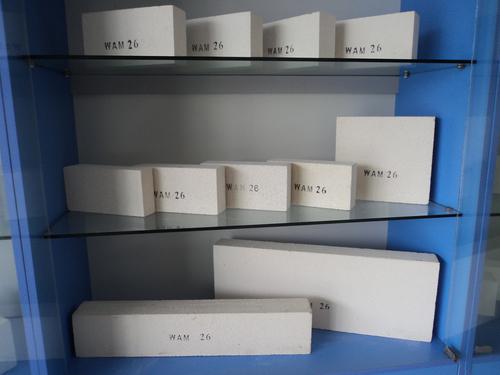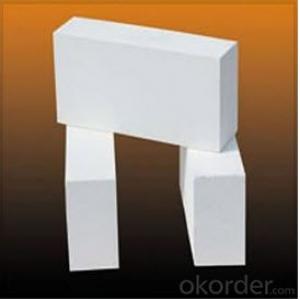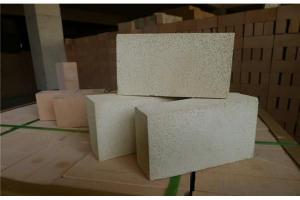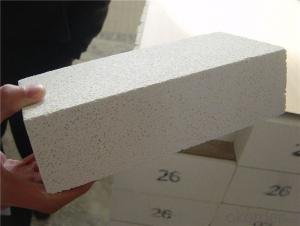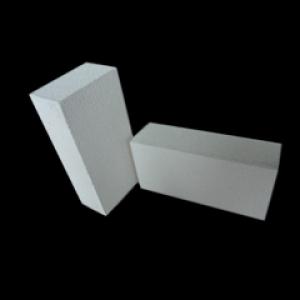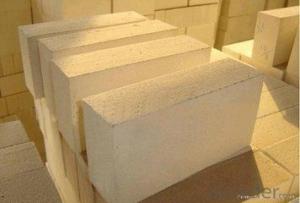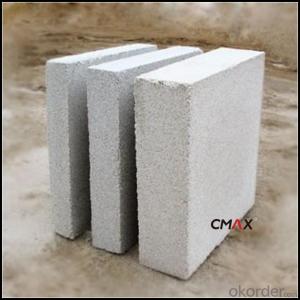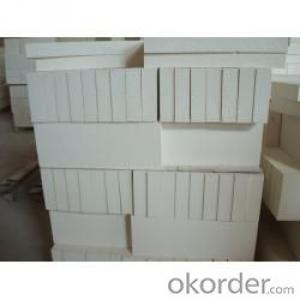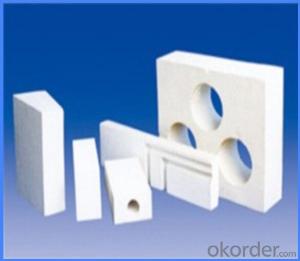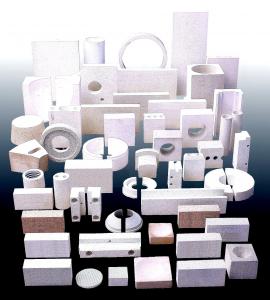High-Quality Insulating Fire Brick
- Loading Port:
- China Main Port
- Payment Terms:
- TT OR LC
- Min Order Qty:
- -
- Supply Capability:
- -
OKorder Service Pledge
Quality Product, Order Online Tracking, Timely Delivery
OKorder Financial Service
Credit Rating, Credit Services, Credit Purchasing
You Might Also Like
General Information
CMAX insulating firebricks are classified under temperature between 1300℃ to 1700℃, manufactured from high purity alumina clay.
Feature
Light weight and low thermal conductivity
Low heat storage
Low iron and impurities
High thermal shock resistance
Application
CMAX insulating firebricks can be used as a hot face lining directly exposed to the heat or as a backup insulation layer in iron and steel mills, non-ferrous foundries, petrochemical, ceramic, glass.
- Q: Are insulating fire bricks suitable for use in autoclaves?
- The utilization of insulating fire bricks in autoclaves is typically not suitable. Autoclaves, which are utilized for sterilization, curing, and material testing, create high-temperature and high-pressure environments. Insulating fire bricks are primarily intended for reducing heat loss and providing insulation in applications involving high temperatures. However, autoclaves necessitate materials capable of withstanding both high temperatures and high pressures. Insulating fire bricks are not designed to withstand the high pressures commonly encountered in autoclaves, and employing them in such environments may result in structural failure or damage. To ensure the safety and durability of the equipment, it is recommended to use refractory bricks or materials specifically engineered for high-temperature and high-pressure conditions in autoclave applications. These materials are designed to endure the extreme conditions found within autoclaves.
- Q: Are insulating fire bricks suitable for insulation in refinery heaters?
- Yes, insulating fire bricks are suitable for insulation in refinery heaters. Refinery heaters operate at extremely high temperatures, and insulating fire bricks are designed to withstand these temperatures and provide effective insulation. These bricks have low thermal conductivity, which means they can prevent heat from escaping the heater, thus reducing energy loss and increasing the overall efficiency of the heater. Additionally, insulating fire bricks have excellent thermal shock resistance, meaning they can withstand rapid temperature changes without cracking or breaking. This is crucial in refinery heaters, as they often experience frequent temperature fluctuations during operation. Furthermore, insulating fire bricks are lightweight and easy to install, making them a convenient choice for insulation in refinery heaters. Overall, insulating fire bricks are a suitable and effective option for insulation in refinery heaters.
- Q: Do insulating fire bricks have a high insulation efficiency?
- Yes, insulating fire bricks have a high insulation efficiency. Due to their low thermal conductivity and high heat resistance, they effectively prevent the transfer of heat, thereby providing excellent insulation.
- Q: Can insulating fire bricks be used in ceramic fiber blankets?
- No, insulating fire bricks cannot be used in ceramic fiber blankets. Insulating fire bricks are dense and solid, designed to provide insulation and withstand high temperatures in applications such as furnaces and kilns. On the other hand, ceramic fiber blankets are flexible and lightweight, made from ceramic fibers that provide excellent thermal insulation. They are commonly used as insulation in various industrial applications, including lining for furnaces, boilers, and high-temperature equipment. Mixing insulating fire bricks with ceramic fiber blankets would not be effective as these two materials have different properties and purposes.
- Q: Are insulating fire bricks resistant to electrical conductivity?
- Insulating fire bricks exhibit resistance to electrical conductivity. Their composition comprises materials with low electrical conductivity, like ceramic fibers or insulating refractory materials. The primary objective of these fire bricks is to offer thermal insulation, rendering them suitable for situations that demand the containment of high temperatures. Due to their minimal electrical conductivity, insulating fire bricks serve as linings in electrical furnaces, kilns, and other high-temperature apparatuses that necessitate electrical insulation.
- Q: Can insulating fire bricks be used for insulation in refractory lining repair?
- Indeed, insulation in refractory lining repair can be achieved by utilizing insulating fire bricks. Crafted from lightweight materials, these bricks boast exceptional thermal insulation properties, rendering them perfectly suitable for employment in high-temperature settings like furnaces, kilns, and other refractory lining structures. Their low thermal conductivity and impressive resistance to thermal shock enable them to effectively insulate and safeguard the refractory lining against heat, thereby averting heat loss and diminishing energy consumption. Additionally, the installation and replacement of insulating fire bricks are effortless, solidifying their position as a cost-efficient alternative for refractory lining repair.
- Q: Can insulating fire bricks be used in space heating applications?
- Indeed, insulating fire bricks can be utilized in space heating scenarios. These bricks possess a design that ensures low thermal conductivity, enabling them to effectively retain and distribute heat within a space heating setup. Crafted from lightweight refractory materials with outstanding insulation properties, these bricks possess the ability to encapsulate heat and prevent its dissipation into the surroundings. Consequently, they prove to be an ideal choice for space heating applications that prioritize energy efficiency. Moreover, insulating fire bricks exhibit a remarkable resilience to high temperatures and thermal shock, rendering them suitable for employment in heating systems that operate at elevated temperatures. All in all, insulating fire bricks emerge as a dependable and efficient alternative for space heating applications.
- Q: Can insulating fire bricks be used for both residential and commercial purposes?
- Yes, insulating fire bricks can be used for both residential and commercial purposes. These bricks are designed to withstand high temperatures and provide excellent insulation, making them suitable for various applications such as lining fireplaces, kilns, furnaces, and industrial ovens in both residential and commercial settings.
- Q: Are insulating fire bricks resistant to insects and rodents?
- No, insulating fire bricks are not specifically designed to be resistant to insects and rodents. While these bricks are primarily used for their excellent thermal insulation properties in high-temperature applications such as furnaces and kilns, they do not possess any inherent resistance to pests. If you are concerned about insects or rodents, it is recommended to implement additional pest control measures such as sealing any gaps or cracks and using appropriate pest deterrents.
- Q: Can insulating fire bricks be used in the construction of hot blast stoves?
- Yes, insulating fire bricks can be used in the construction of hot blast stoves. Insulating fire bricks are designed to withstand high temperatures and provide excellent thermal insulation, making them suitable for use in environments with extreme heat such as hot blast stoves. These bricks help to maintain the high temperatures required for efficient combustion while minimizing heat loss, improving the overall performance and energy efficiency of the hot blast stoves.
Send your message to us
High-Quality Insulating Fire Brick
- Loading Port:
- China Main Port
- Payment Terms:
- TT OR LC
- Min Order Qty:
- -
- Supply Capability:
- -
OKorder Service Pledge
Quality Product, Order Online Tracking, Timely Delivery
OKorder Financial Service
Credit Rating, Credit Services, Credit Purchasing
Similar products
Hot products
Hot Searches
Related keywords

